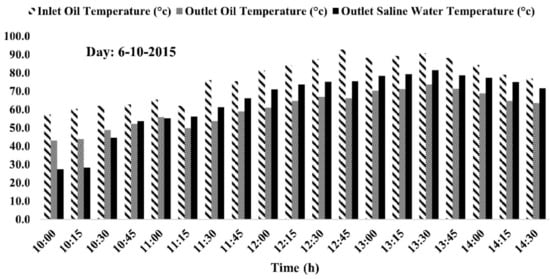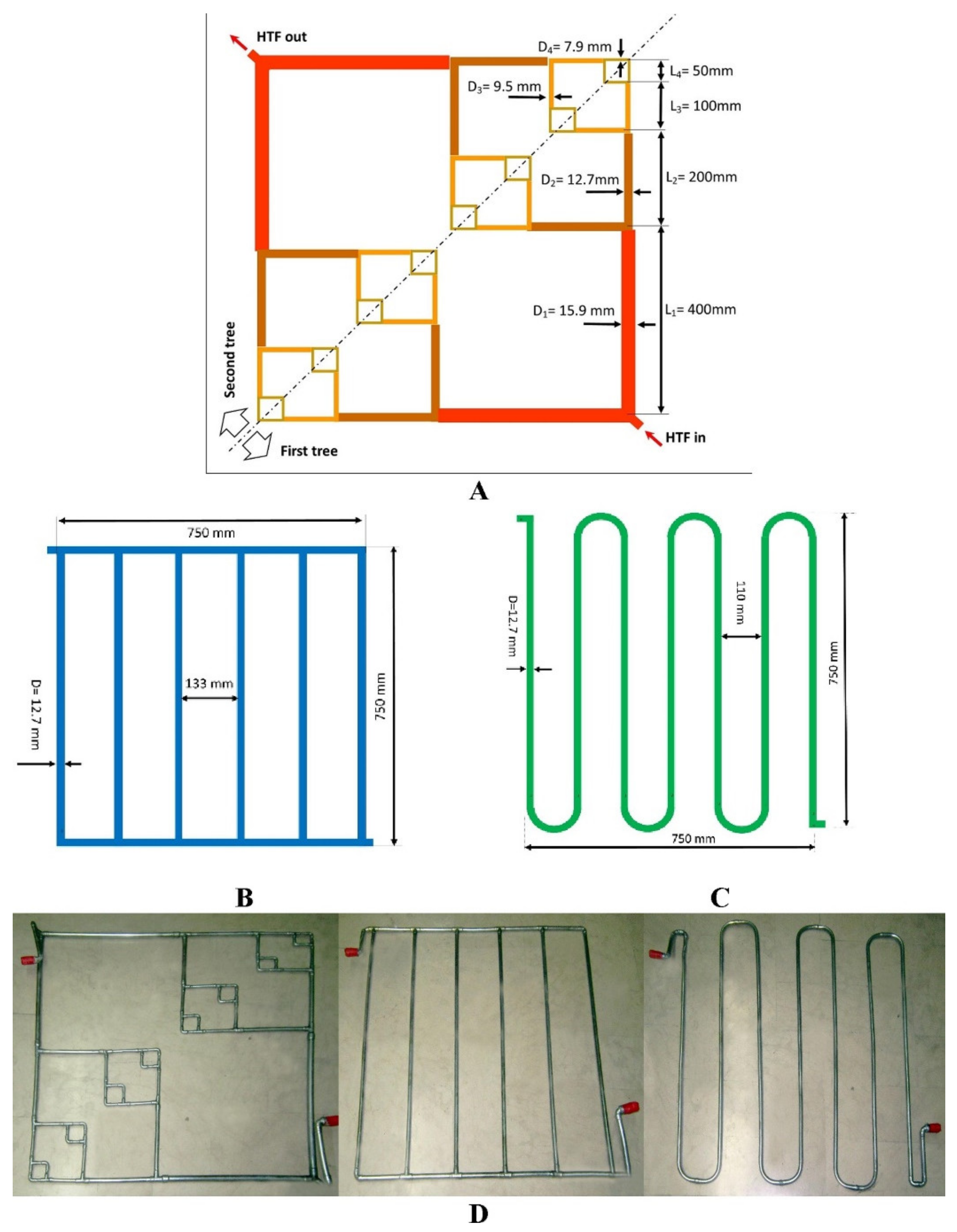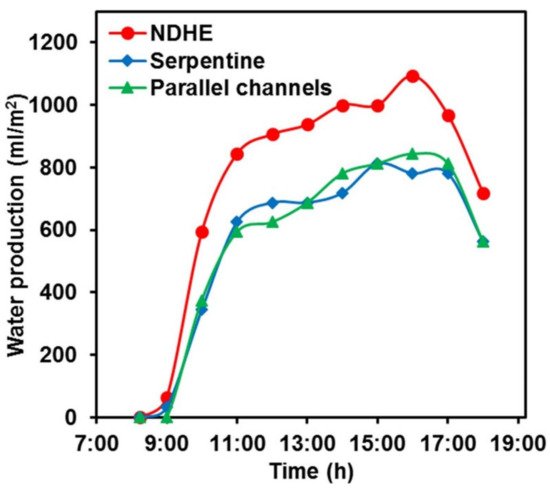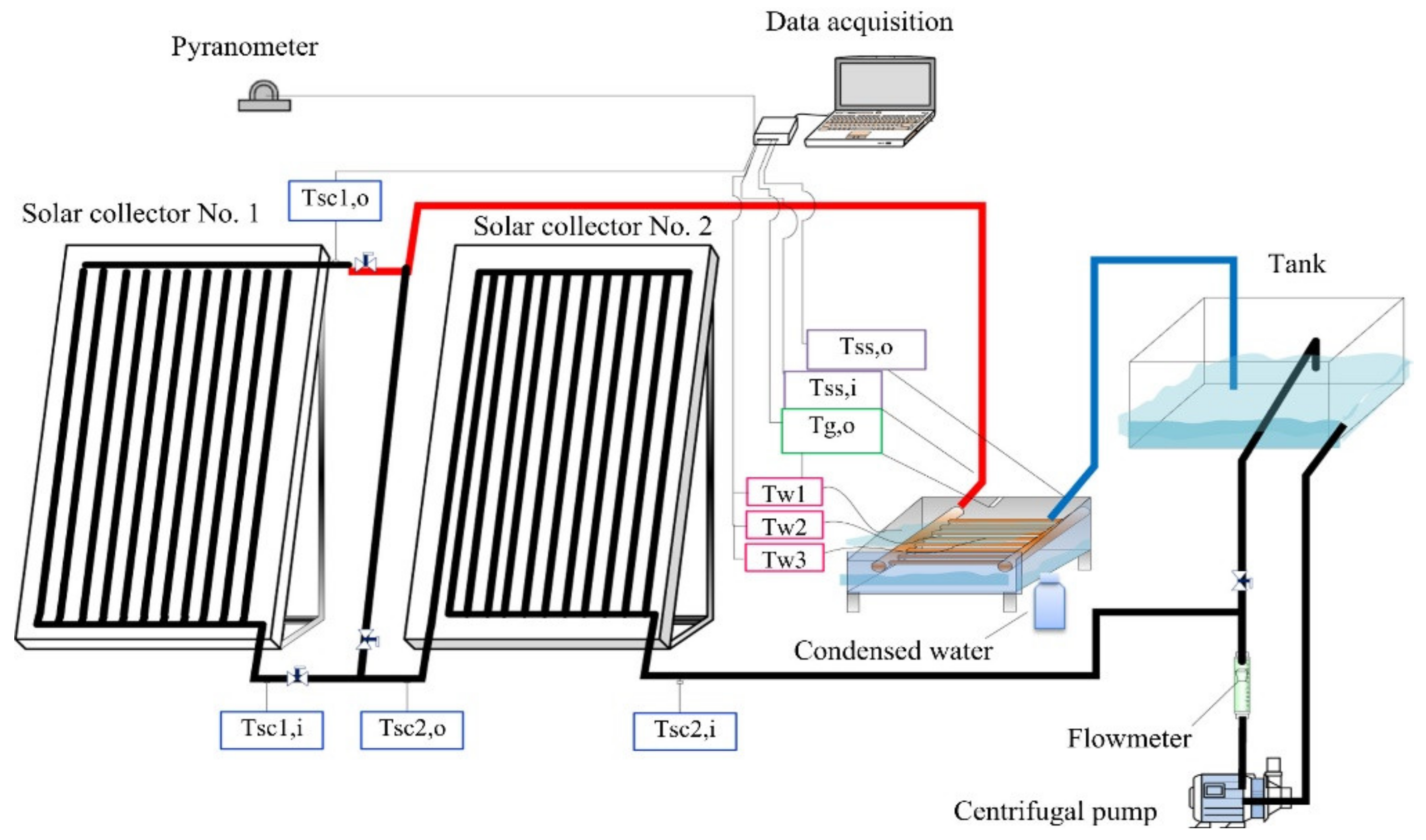Your browser does not fully support modern features. Please upgrade for a smoother experience.
Please note this is a comparison between Version 1 by Mahmoud Ahmadein and Version 4 by Bruce Ren.
Solar desalination is a process to convert saline water into potable water by the application of solar energy. The enhancement of the distillate output of the solar desalination is low, so it is not considered as a method to produce potable water. A heat exchanger is an important device used for heat transfer applications.
- solar desalination
- solar still
- distillate productivity
- heat exchanger
1. Introduction
The potable water scarcity problem worsens day by day due to various applications such as drinking, industrial applications and many more [1]. In many areas of the world, people suffer from many diseases due to the scarcity of potable water [2]. The distribution of water on the earth is very uneven [3]. The problem regarding the availability of freshwater to the population is significant in many areas of the world [4]. In African countries, this issue is very critical [5]. The people living in these countries do not have enough suitable drinking water [6]. The earth is predominantly covered with saline water, which is not directly usable for drinking [7]. In order to use seawater for drinking purposes, its salinity must be removed because a salinity level of around 500 ppm is recommended for drinking [8]. Desalination is a simple and easy-to-use technique to remove the impurity/salinity from seawater or brackish water [9]. There are many different techniques available for water cleaning, but solar desalination is the best among them due to its simplicity and non-polluting nature. It is also helpful in areas where there is a shortage of electrical energy resources [10]. This is the reason behind the wide usage of the solar desalination method [11]. Through evaporation and condensation processes, distilled water can be produced from the solar still [12]. Due to high heat losses, solar distillate productivity is still very low [13]. It provides an average of 3 L/day. This is not enough drinking water for a single person [14].
Many researchers have used different methods to lower the heat loss and increase the productivity of solar stills [15][16][17][15,16,17]. They used various techniques such as changing the configuration of the still, changing the solar still design, using a different absorbing material, or introducing components such as flat plate collectors, fins, evacuated tubes, etc. [18][19][20][21][18,19,20,21]. To increase the evaporative and absorber area, a solar still was modified with an attachment of trays and mirrors inside the still by Essa et al. [22]. A unique solar-geothermal-gas-driven polygeneration system was designed and developed to produce hot water, potable water, combined power, and hydrogen in [23]. Morad et al. [24] reduced the top cover losses by applying a cooling technique. An estimated 30% higher efficiency can be achieved by applying their technique to a solar still. Shyora et al. [25] conducted a similar experiment by modifying a stepped-type solar still and obtained a 23.5% higher efficiency. Panchal and Patel [26] observed that higher wind speeds and solar radiation increase distillate productivity. Badran and Tahaineh [27] used a flat plate collector (FPC). They achieved a 36% higher efficiency compared to a conventional solar still by preheating the water to enhance distillate productivity. Raju and Narayana [28] connected two FPCs in a series to a conventional solar still. They observed a 41% higher distillate productivity. Madiouli et al. [29] used a parabolic trough collector (PTC) and FPC to concentrate solar radiation in a conventional solar still. It has also been found that stills are at their maximum efficiency in summer compared with winter. Fathy et al. [30] experimented using a fixed and movable PTC with a double-slope still to enhance distillate productivity. Panchal [31] conducted an experiment using energy storage materials, such as metal stones and cow dung, and obtained better results. Panchal [32] reviewed different thermal energy storage materials such as black rubber, stones, ink, dyes, charcoal particles, jute wicks, etc. It was found that these materials have good energy-absorbing capacity. Murugavel and Shrithar [33] used a wick material inside the basin area as an absorber to lessen the volumetric heat capacity and enhance the heat transfer area inside the solar still. Omara et al. [34] used fins and corrugated absorber surfaces inside a solar still to improve the distillate productivity. Due to modifications, they achieved a 40% higher distillate productivity than a conventional solar still. Mevada et al. [35] reviewed different attachments of fins and found that increasing the height of the fins resulted an enhanced efficiency of the solar still. Sharshir et al. [36] used evacuated tubes and nanofluids with a pyramid-shaped solar still and compared the experiment with a conventional still. They also measured the performance of copper oxide and carbon black nanomaterial with a solar still. Kumar et al. [37] used a fan to circulate the water from the basin of the solar still to evacuated tubes. They found that the performance of the force mode system is higher than the natural mode. Panchal and Shah [38] experimented on a double-slope-type solar still with evacuated tubes and energy storage materials. They found that a minimum 2 cm basin water depth led to the optimum performance of the solar still.
Climatic parameters such as wind speed and solar intensity also affect the productivity of solar stills [39][40][41][39,40,41]. The performance decreases at lower wind speeds and low solar intensity [42]. To increase the heat transfer coefficient of water, Panchal and Sathyamurthi [43] used porous-type fins. Rajaseenivasan and Shrithar [44] measured the performance of a solar still using square and circular types of fins and found that both fins increase the efficiency of the solar still. Sebaii and Nagar [45] found that the fins’ material did not affect the distillate productivity of the solar still. The productivity of a solar still could also be increased by various parameters reviewed by Panchal and Patel [1]. Diesel engine exhaust gases used with a solar desalination system were evaluated by Panchal Hitesh [38] to enhance distillate productivity. Various heat storage materials and their effects on distillate productivity have been reviewed by Panchal [46]. Nanofluids and their various challenges, applications, heat transport, and other qualities were explained very effectively by Said et al. [47]. A geothermal and solar energy-operated multigeneration system with a thermoelectric generator was proposed by Mahmoudan [48]. Saravanan et al. [49] used a kanchey marble to enhance the distillate productivity of a solar still. They observed that water temperature increases without affecting the phase of the water medium basin, and approximately a 163% higher distillate output could be achieved.
2. Heat Exchanger
A heat exchanger is used to transfer heat between two fluids [50]. It prevents the mixing of two fluids by acting as a separating wall. Heat exchangers are used in solar stills to recover wasted heat, which reduces the heat losses, and are essential from environmental and economic points of view [51]. To increase the inner water temperature and heat transfer capacity of water, a heat exchange medium is used, which preheats the water; hence, the efficiency of a solar still could be improved. In a heat exchanger, the liquid is separately passed into a tube where heat is exchanged between two fluids, and a thermal effect is achieved [52].3. Solar Desalination System with Heat Exchanger
The efficiency of the solar still is determined by the ratio of the evaporative heat transfer coefficient and the product of the area of the solar still and solar intensity. The evaporative heat transfer coefficient depends on the temperature difference between the water and inner glass. Only solar energy is responsible for raising the temperature in a conventional solar still. However, with the help of a heat exchanger, external hot water is supplied, so the temperature difference will be higher compared with the conventional solar still, and so distillate productivity and efficiency are increased. Many researchers have used a heat exchanger with a solar still in different ways to increase the distillate output as well as efficiency. Yadav [53] conducted an experiment using a heat exchanger on a double-slope solar still. He found that the heat exchanger length had a significant effect on the performance of a solar still. He also concluded that the system improved distillate productivity but lessened efficiency. Chorak et al. [54] developed a heat exchanger for a multi-effect desalination plant that was powered by solar energy. The heat exchangers utilized in the experiment were shell and tube heat exchangers, which allowed them to increase the distillate productivity. The heat transfer coefficients were determined using the Bell method for single-phase heat transfer, the Kandlikar method for boiling correlations, and the Kutateladze method for condensation correlations. They discovered that the technique they employed increased distillate productivity at minimal cost. To investigate the performance of solar stills, Hosseini et al. [55] conducted an experiment on a solar distillation system with a parabolic trough collector (PTC) with a vacuum-type HE. A schematic diagram of the experimental setup is shown in Figure 1. The oil inside the PTC passed through a pump to the vacuum-type HE. The temperature of the oil and water increased with higher solar intensity (Figure 2), and 1.5 kg/m2/day of distilled water was produced through the system.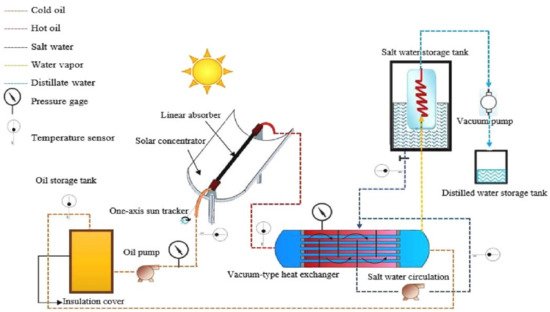
Figure 1.
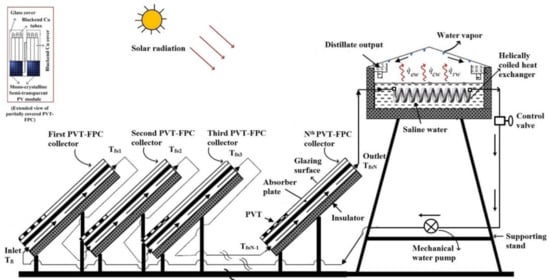
Figure 3.
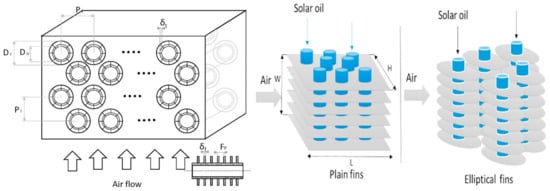

Figure 5. Different designs of heat exchangers: (A) novel design; (B) parallel channel; (C) serpentine design; (D) different designs of heat exchanger [62].

Figure 7. Schematic diagram of the effect of varying heat transfer coefficient of heat exchanger-equipped solar still by nanofluids [65].
Table 1.
Comparison of Different Research Work on solar still with Heat exchanger.
| Author(s) | Configuration | Observations |
|---|---|---|
| Yadav [53] | Double-slope solar still with HE |
|
| Chorak et al. [54] | Shell- and tube-type HE |
|
| Hosseini et al. [55] | PTC and shell- and tube-type HE |
|
| Sahota et al. [57] | Helical coil-type HE |
|
| Dhivagar and Sundararaj [58] | Copper material HE |
|
| Hammadi [58] | Ground Heat exchanger |
|
| Bhargava and Yadav [60] | HE with evacuated tubes |
|
| Chaanaoui et al. [61] | Fin tube-type heat exchanger |
|
| Mohammadi et al. [62] | Novel shape, parallel, serpentine heat exchangers |
|
| Kumar et al. [63] | Double-slope solar still with HE |
|
| Kumar and Tiwari [64] | HE with solar still |
|
| Mahian et al. [65] | Heat exchanger with nanomaterial |
|
| Al-Ameen et al. [66] | Heat exchanger with Soil |
|
| Joshi and Tiwari [51] | Heat exchanger with FPC |
|

